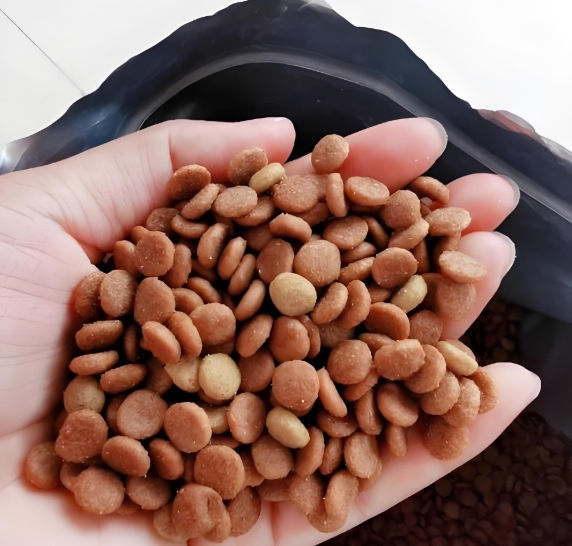Key Considerations in the Dog Food Manufacturing Process
The production of commercial dog food is a complex industrial process that demands rigorous attention to detail at every stage. Ensuring the final product is safe, nutritious, and palatable requires strict control over ingredients, processing parameters, and hygiene. Here are the critical considerations that manufacturers must address.
1. Raw Material Quality and Sourcing
The foundation of high-quality dog food is high-quality ingredients.
- Supplier Verification: All suppliers of meat meals, grains, vitamins, and other raw materials must be thoroughly vetted for safety and consistency. Certificates of Analysis (CoA) should be required for every shipment.
- Ingredient Testing: Incoming ingredients must be tested for contaminants, including:
- Mycotoxins (from moldy grains)
- Heavy metals (e.g., lead, arsenic)
- Pathogenic bacteria (e.g., Salmonella, E. coli)
- Pesticides and chemical residues
- Proper Storage: Ingredients must be stored in appropriate conditions (controlled temperature and humidity) to prevent spoilage, rancidity, or pest infestation before use.
2. Processing Parameters and Control
The cooking and shaping processes must be precisely managed to ensure safety and nutritional adequacy.
- Time-Temperature Relationship: During extrusion, the combination of heat, pressure, and mechanical shear must be sufficient to cook starches, denature proteins, and destroy harmful microorganisms. Under-processing risks foodborne illness, while over-processing can destroy heat-sensitive nutrients.
- Moisture Content: The water content added during mixing and generated as steam during extrusion must be carefully controlled. This is critical for achieving the proper texture and ensuring the extruder runs smoothly without clogging.
- Nutrient Fortification: Heat-labile nutrients (like certain vitamins and amino acids) are often added after the high-heat extrusion process via a coating. This step must be precisely measured to ensure the final product meets its guaranteed nutritional profile.
3. Food Safety and Pathogen Control
Preventing contamination is paramount for producing safe pet food.
- Kill-Step Validation: The extrusion and drying processes must be validated as a “kill-step” capable of reducing pathogenic bacteria to safe levels. This involves regular microbial testing of the product post-extrusion and post-drying.
- Prevention of Recontamination: The product is most vulnerable after it has been cooked and dried. Stringent sanitary design of cooling and conveyor systems is essential to prevent contact with surfaces that could harbor Salmonella or other pathogens.
- Environmental Monitoring: A robust program of testing the production environment (e.g., swabbing equipment, floors, and air ducts) is necessary to identify and eliminate potential sources of contamination before they can affect the product.
4. Final Product Quality and Consistency
Every batch of food must be consistent in nutrition, shape, and texture.
- Quality Control (QC) Checks: QC labs must continuously test the final product for:
- Proximate Analysis: Ensuring correct levels of protein, fat, fiber, and moisture.
- Pellet Integrity: Checking for durability and hardness to prevent excessive “fines” (broken pieces) in the bag.
- Size, Shape, and Color: Confirming visual consistency for consumer appeal.
- Palatability Testing: Regular feeding trials (with canine taste-testers) are crucial to ensure the food remains highly appealing and that recipe changes do not affect acceptance.dog food machine for sale
5. Packaging and Storage
The final barrier protecting the food is its packaging.
- Barrier Packaging: Bags must be made from materials that provide an effective barrier against oxygen and moisture. This prevents the fat in the food from oxidizing and becoming rancid and stops moisture from entering, which could promote mold growth.
- Proper Sealing: Bags must be securely sealed to maintain freshness and prevent contamination during shipping and storage.
- Labeling Accuracy: Every label must be accurate, listing all ingredients in descending order by weight and guaranteeing the nutritional analysis. This is both a regulatory requirement and an ethical necessity.dog food machine for sale
6. Sanitation and Equipment Maintenance
A clean plant is a safe plant.
- Master Sanitation Schedule (MSS): The facility must follow a strict and documented cleaning schedule. This includes daily cleaning of processing lines and regular deep-cleaning of all equipment.
- Preventative Maintenance: Regular maintenance of extruders, dryers, grinders, and mixers is essential to prevent mechanical failures that could lead to production downtime, metal shavings in the product, or inconsistent processing.
Conclusion: A Commitment to Safety and Quality
Producing high-quality dog food is a science that hinges on a commitment to rigorous standards at every single step—from the farm to the bag. By meticulously controlling raw materials, processing parameters, food safety protocols, and final product quality, manufacturers can ensure they deliver a safe, nutritious, and consistent product that supports the health and well-being of dogs. For consumers, understanding these considerations highlights the importance of choosing products from companies that prioritize these critical aspects of manufacturing.








